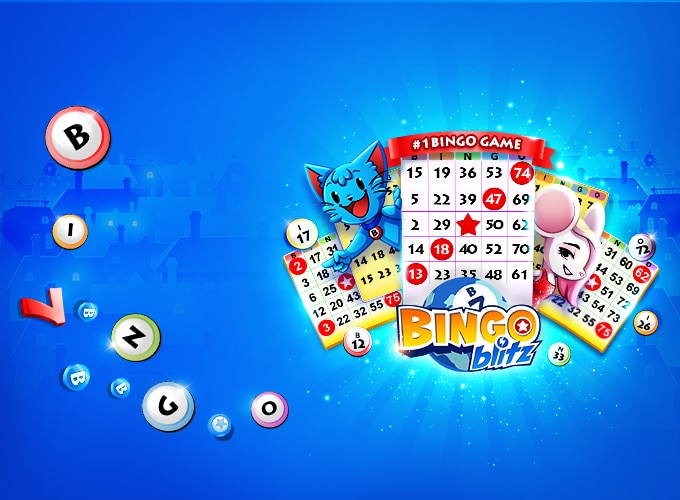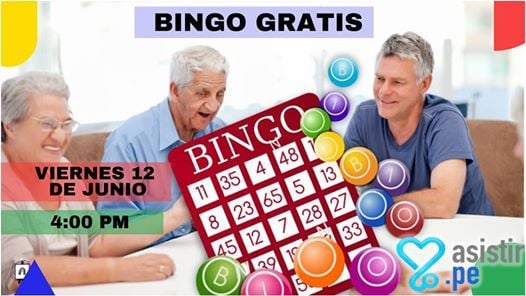Study the instructions below for fun games that are good for classrooms, small groups, and individual students.
= A multiplication.com favorite game!
Servicing Maryland, Virginia, Pennsylvania, New Jersey, Florida, Kentucky and Indiana, Bingo Paper, Ink Daubers, Dabbers, Pull-tabs, coin boards, cash boards,jar. Play the most popular offline Bingo games for FREE. Bingo by SNG lets you enjoy the real deal a casino card game can offer. It is simple, beautiful and fun. It is the only Bingo game with online and offline game modes. If you like free games without wifi, try it now! Las Vegas casinos are not the only place where you can play Bingo. You can earn MILLIONS of daily chips FREE.
Online Games
| Good for: | Individuals |
| Duration: | Varies |
| Difficulty: | Easy |
| Noise level: | Noisy |
- Check out our huge variety of online games, great for self-guided learning
- We've recently introduced several multi-player games with new challenges!
Visit our Games page to get started.
Around the World
| Good for: | Classrooms |
| Duration: | Long |
| Difficulty: | Easy |
| Noise level: | Quiet |
- Students sit in a circle, and a starting person is selected.
- The starting person stands behind the student next to him or her.
- The teacher holds up a flash card.
- The student to say the answer first moves on to challenge the next student.
- If a sitting student says the answer first, the students switch places.
This process continues until at least one student makes it completely around the circle.
| Materials: Large flash cards (PDF) |
Buzz
| Good for: | Small groups |
| Duration: | Flexible |
| Difficulty: | Easy |
| Noise level: | Quiet |
This game is used to review a specific fact family and can be played in a small group or with the entire class.
- Choose a number between 2 and 9. The first student says 1, the next student says 2, and so on.
- Instead of saying a multiple of the selected number, the student says 'buzz.”
- If a player forgets to say buzz or says it at the wrong time, he or she is out.
- Continue until the group reaches the last multiple of the number times 9.
- For example, if “2” is chosen. The first students says “1,” the next student says “buzz,” the next students says “3,” the next student says “buzz,” and so on until 18 (2 x 9) is reached.
No materials needed.
Flashcards at the Door
| Good for: | Classrooms |
| Duration: | Short |
| Difficulty: | Easy |
| Noise level: | Noisy |
- Choose flash cards that correspond with facts the students are learning.
- When the students line-up to enter or exit the classroom, hold up a flash card as each student passes through the door.
- The answer to the flash card is the 'pass' into the classroom.
- If a student misses the problem, he or she must step to the side and figure out the answer before he or she enters the classroom.

You may want to choose flash cards according to the individual student's ability. This activity may be a bit time-consuming the first couple of times you try it, but it will go faster as students memorize the facts.
| Materials: Large flash cards (PDF) |
Flip Up
| Good for: | Pairs |
| Duration: | Flexible |
| Difficulty: | Easy |
| Noise level: | Noisy |
Students compete to see who can answer all of the problems correctly in the shortest amount of time.
- Two students sit together facing each other.
- One student holds the flash cards so the problem faces the other player.
- The other students says the answer aloud and the student holding the card confirms the answer.
- If the student is correct, the flash card is discarded.
- If the student is incorrect, the card is returned to the deck.
- The student continues until he or she has provided all of the correct answers and the students switch places.
| Materials: Large flash cards (PDF) A timer |
Multiplication Bingo
| Good for: | Classrooms |
| Duration: | Varies |
| Difficulty: | Easy |
| Noise level: | Noisy |
- Print out the bingo card template, and make a copy for each student.
- Each student chooses any of the 25 numbers at the bottom of the bingo card and write one in each square.
- Remove all of the zero flash cards except one.
- Randomly draw a flash card, and read the problem aloud.
- Each student with the answer on their bingo card marks the square.
- Continue until someone obtains a bingo.
| Materials: Bingo templates (PDF) Large flash cards (PDF) |
Seeing Doubles
| Good for: | Pairs, small groups |
| Duration: | Flexible |
| Difficulty: | Easy |
| Noise level: | Noisy |
Learning the multiplication facts with 2 as a factor can be fun and easy with dominoes.
- Use domino doubles to demonstrate that multiplying by two is the same as adding doubles (e.g., 5 + 5 = 2 x 5, 6 + 6 = 2 x 6).
- Ask your students create both addition and multiplication fact statements for the domino doubles.
| Materials: Dominoes |
Slap Happy
| Good for: | Pairs, small groups |
| Duration: | Flexible |
| Difficulty: | Easy |
| Noise level: | Noisy |
- Each player draws 7 cards. At each player's turn, the player looks for a matching problem and product.
- If he or she a match, he or she grabs a spoon, and all of the other players attempt to grab the remaining spoons.
- The player exposes the cards. If the player is correct, the player without a spoon writes an M (the first letter in MULTIPLY).
- If the player is incorrect, the player writes an M. The cards are placed in a discard pile.
- If, during a turn, the player does not have a match, he or she draws from the pile.
Each time a player spells MULTIPLY, the player is out of the game. The game continues until a single player remains.
| Materials: Spoons (one spoon less than the total number of players, for example, five spoons for six players) Two sets of flash cards (PDF; first set with the answers and the second with the problems) Teacher Tip: Use a Slap-o-Matic (from the HandsDown board game) instead of spoons. |
Team Tag
Gratis Bingo Game Spelen

| Good for: | Small groups, classrooms |
| Duration: | Varies |
| Difficulty: | Easy |
| Noise level: | Noisy |
- Put two equal stacks of flash cards on a desk in the front of the room.
- Divide the students in two groups.
- Ask the students to form two single file lines facing the desk. The first student in each line should be about 10 feet from the desk.
- When play starts, the first person in line races to the desk, takes the first card in his or her pile, displays the card to the team, announces the answer, places the card in a discard pile, and then races to tag the next person in line.
- If the student does not know the answer or gives the wrong answer, he or she puts the card on the bottom of the pile and selects the next card. This student keeps selecting cards until he or she knows the answer to one or until five cards have been selected.
- The two teams play simultaneously, and the first team to correctly answer all the multiplication facts in its pile wins.
| Materials: Two sets of flash cards (PDF) |
Times Table Football
| Good for: | Small groups, classrooms |
| Duration: | Varies |
| Difficulty: | Hard |
| Noise level: | Quiet |
- Create a field of play using the overhead projector or chalk/white board.
- On the side of the flash card with the answer, write the results of a football play (e.g. 25 yard pass to wide out, 3 yard run by fullback, incomplete pass, lose 5 yards due to a fumble).
- Create about 100 plays on flash cards. Most of the plays should be good results, but some plays are errors to add an element of surprise.
- Divide your students into two teams. Each player takes a turn answering the fact.
- If he or she answers correctly, the play on the card occurs. If a player misses a multiplication fact, the opposing team is given a chance to answer the fact correctly.
- If the other team answers the fact correctly, the team recovers the fumble and start with a first down.
- Start on the 20 yard line at the beginning of the game, the beginning of the second half, and after touchdowns. On the 4th down, the team may choose to try for a 1st down, punt (40 yards), or attempt a field goal (must be at least on the 40 yard line).
You can be creative with penalties (e.g., penalties can be assessed for not paying attention when it is not your turn, excessive talking, or helping someone else).
Gratis Bingo
| Materials: One white board Four sets of flash cards (PDF) |
War
| Good for: | Pairs |
| Duration: | Varies |
| Difficulty: | Easy |
| Noise level: | Noisy |
- Write on the board, Ace = 1, J = 0, Q = 11, K = 12.
- Break the students into teams of 2, and ask the students to shuffle their cards.
- Instruct the students to deal the cards into two piles and stack a pile facedown in front of each player.
- Both students turn over their top cards at the same time. As quickly as possible, they multiply the 2 cards together, and shout the answer.
- The student who says the correct answer first places the cards in his or her winning pile. If a tie occurs, students should continue to turn their cards until someone wins the pile.
Gratis Bingo Spelen
When all of the original stack has been played, the players count their winnings. The player with the highest total wins.
Juegos De Bingo Gratis Online

| Materials: One deck of playing cards per each pair of students |
What's Your Name, I Mean Number
| Good for: | Classrooms |
| Duration: | Flexible |
| Difficulty: | Easy |
| Noise level: | Noisy |
- Create a name tag for each student, and write a multiplication fact (e.g. 7 x 5) on the name tag, rather than his or her name.
- Each student wears a name tag for the day. When a student wants to speak to someone, they must call him or her by the answer to their multiplication fact. (e.g. 35).
| Materials: Nametags |

Bingo Blowout is one of the first bingo sites to go online operating since 1999! Join the thousands of players who play at Bingo Blowout and play free bingo with them! Blowout has the most exciting chatrooms with never a dull moment! Make some fun new friends and join in with all the great community activities and even join the Bingo Blowout Facebook group! It’s FREE so why wait?
To start playing free bingo at Bingo Blowout simply register and start enjoying our free online bingo halls!
Payouts reviewed by Chambers & Co.
This page is having a slideshow that uses Javascript. Your browser either doesn't support Javascript or you have it turned off. To see this page as it is meant to appear please use a Javascript enabled browser.